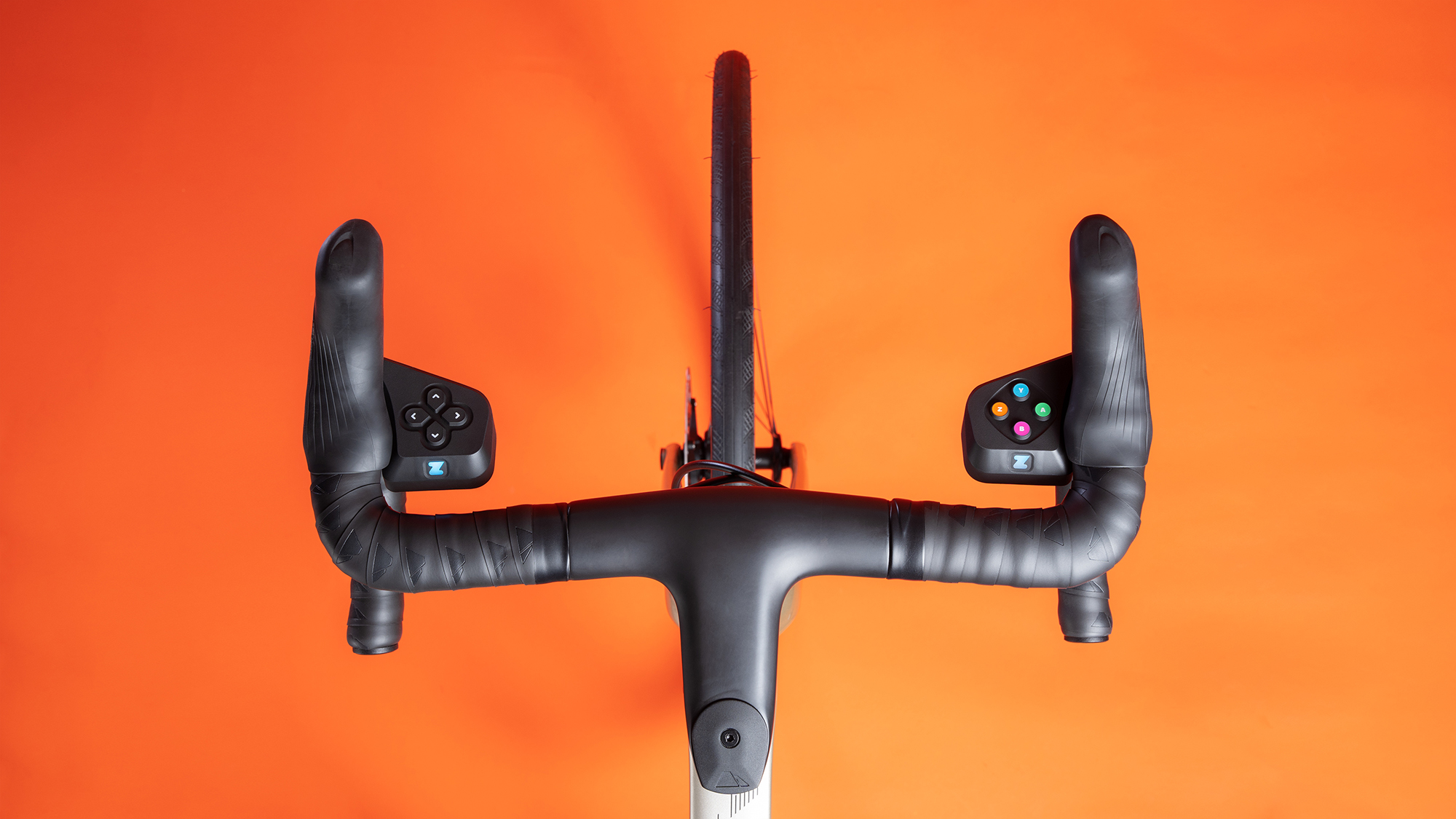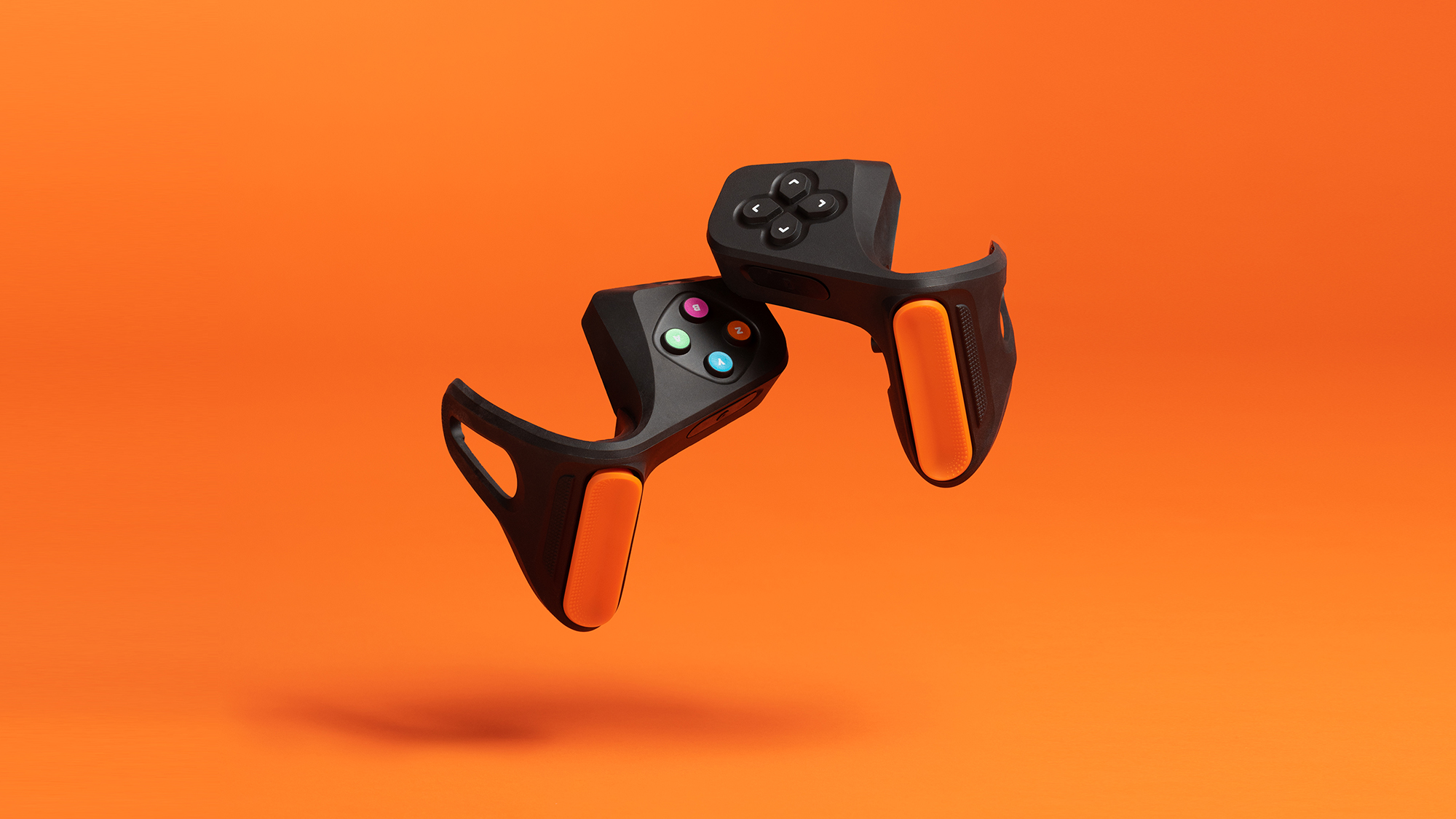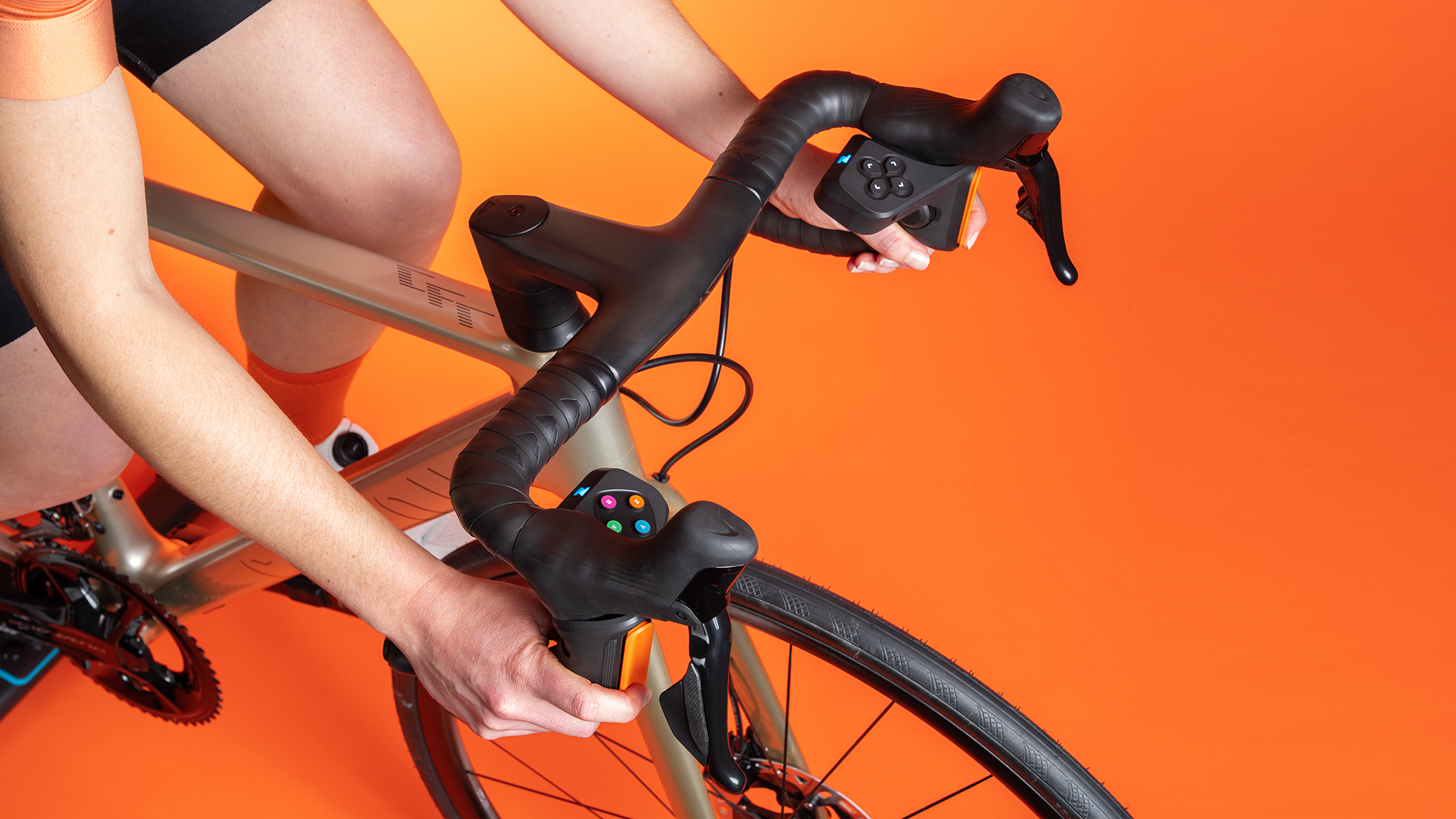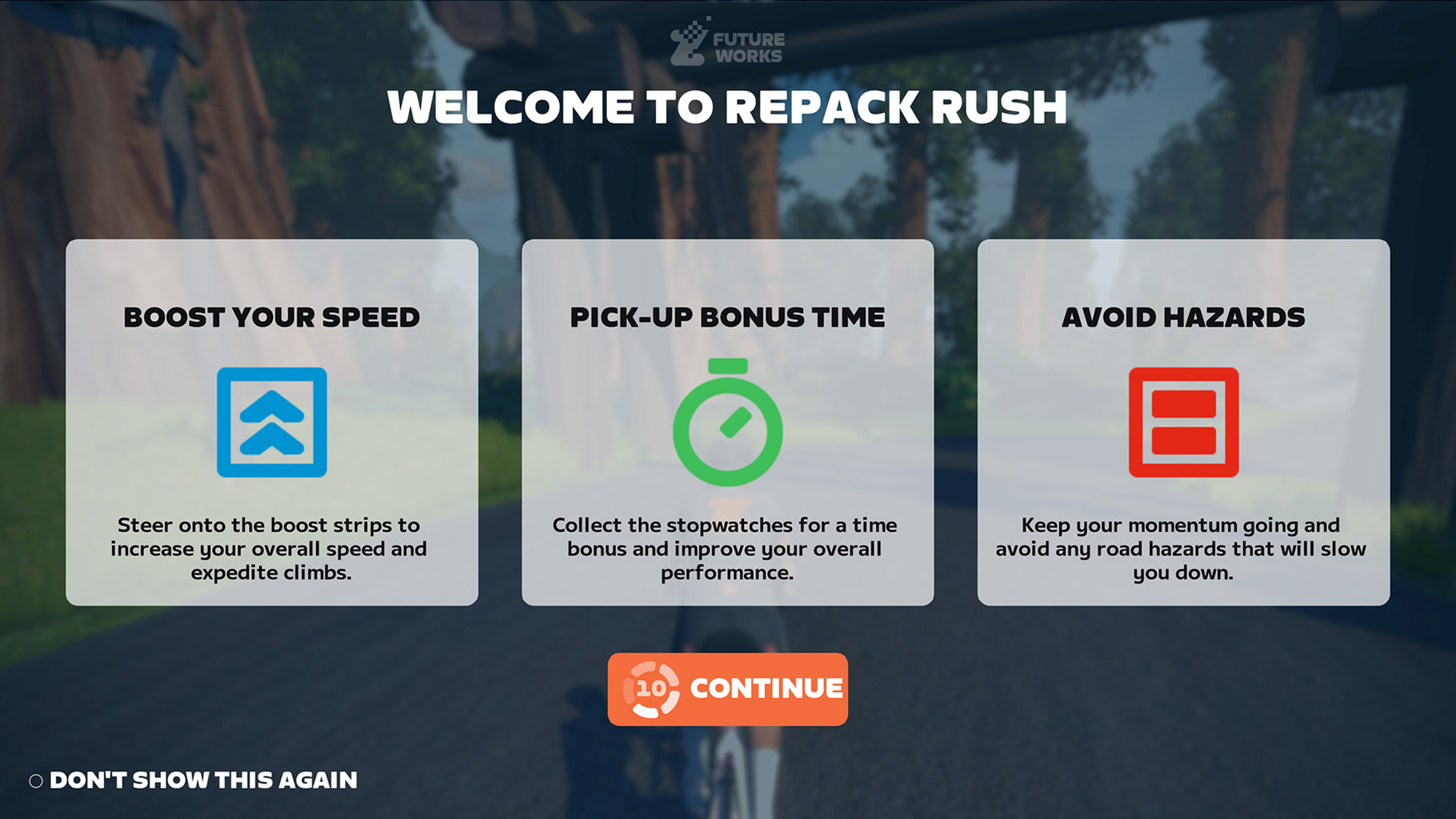
Zwift as a company has demonstrated over the years that the brand knows how to smooth pain points in user interactions. In a continued effort towards that, today Zwift announces a new product called Zwift Play. The hardware is only part of the announcement though.
At the heart of what Zwift is announcing is an acknowledgement that the interface has an issue. Right now, it's a hassle to interact with Zwift. You can use the companion app on a phone, you can reach over your bars for a keyboard, you can use the AppleTV remote, and some people have various wireless mouse and keyboard setups. None of the options are great though.
Zwift user studies show that the more its users interact with other people, and the interface itself, the more they ride. Making that interaction easier required both the addition of new hardware and changes to the software.

Software changes to set the stage
To explain the hardware, it makes sense to back up a little and start with the software side. The first step was actually back in April when users saw a change to the action bar. At the time, 'Coffee Stops' rolled out as a way to take a moment when you needed to without losing your group, and Teleport was announced as a way to jump to a friend or robo-pacer when needed. Those changes were only part of the picture though. Users didn’t know it then but the idea was to put the action bar into a more prominent position in terms of the interface. It didn’t actually change how you interacted but it did set the stage for future changes.
Then, more recently, Zwift has also taken steps to address the lack of useability around steering. While there have been ways to steer in Zwift since 2019, almost no one uses it. The main reason is that it's difficult to do so. It's very rare to find an event with steering enabled and even if you do, there are limited ways to actually do it. Without telling anyone, Zwift set the stage to fix those issues by turning on steering by default.

The hardware: Zwift Play
With the stage set for easier interactions, today Zwift announces the hardware that makes use of the software. Zwift Play is a pair of controllers, modelled on gaming hardware that wrap around the curve of your drop bars. Rest your hands on the hoods, maybe slightly farther back than you might if you actually needed to use the brake, and you've now got a way to interact with Zwift while riding.
In terms of the physical form, each side mirrors the other and includes four buttons plus a paddle. The buttons sit on a small shelf towards the inside of the bars and on the left the rubberized buttons have arrows between them and sit quite close to each other. On the right, things look less like a D-pad with more space between the buttons and a combination of colours and letters for labels. The paddles meanwhile sit in front of the curve of the bar, behind your brake levers, and both sides move left or right with sensitivity to understand how far they are being pushed. A rubber strap holds the controllers in place.
The rest of the physical design continues to mirror gaming hardware. Like Playstation controllers, there is an integrated lithium-ion battery. Use should be around 20 hours and when you inevitably forget to charge, the Bluetooth connection will remain usable while charging via a split USB cable. Each controller uses a separate Bluetooth channel, so for AppleTV users, that means the only way to make it all work will be to turn to the Zwift Companion as a bridge. Although that system works without issue, it is another barrier for some users and that’s what Zwift is looking to fix with these announcements.

Final software experience
It's no accident that while cyclists across most of the world are outside enjoying the sun and staying far from indoor training, Zwift is making an announcement. It's not a desperate bid to entice riders back indoors, though I'm sure the brand wouldn't mind that outcome, but rather a deliberate embrace of the off-season for indoor riding. The announcement today gives the brand, and the users, an opportunity to start slow. While the hardware is in its final form, the combined hardware/software experience will continue to evolve and is officially a beta experience.
Right now, the basic functionality is set. The paddles steer with a pull in the direction you want to go and brake with a push. UI interaction will make use of the arrow keys for navigation while the buttons on the right controller handle selecting options or backing out of a selection. The controllers provide direct buttons for ride-ons, power-ups, selecting a route, and making changes during a workout. The newly important action bar will be readily accessible to access everything it offers.
If you want to immediately see how it all feels, Zwift has a new course launching to help do that. Actually, it’s an updated version of the Repack Ridge course that debuted last time Zwift introduced steering. It’s been renamed to Repack Rush and Zwift is now describing it as a twisting course where users “need to dodge braking pads, snag boost pads and collect time bonuses to set a time.” It sounds like, as before, the point is to showcase what the new functionality can do rather than introduce a new core part of the Zwift experience. Will this style of total gamification ever make its way into the core experience of riding on Zwift? Only time will tell.

For now, it seems that the plan is to keep the system close to the Zwift you know. As far as the beta tag, it is likely that tag applies to steering more than anything else. As already mentioned, steering has been fully enabled by default. As part of that change, Zwift is quite clear that is the way the brand envisions the game going forward but it's not exclusive. At launch, each event will have the option of changing the default and going back to no steering, only steering, or a mixed experience. The future is open depending on how things go.
Whatever that future looks like though, what Zwift is doing will look a little different than what you get with Wahoo and RGT. Unlike that service, there will be no period of checking to see if you have steering at the beginning of an event. If you haven't paired a steering device then your experience won't change from what it is today.
When you do pair a steering device, it's also not a definitive advantage. While the potential for gain through taking better lines and making use of the draft is certainly there, it also comes with greater responsibility. Without steering enabled, moving through the pack is, as it is now, only a matter of how hard you push on the pedals combined with the game's physics modelling. If you decide to add steering you'll have to manage that yourself and there's also potential for doing a worse job. Zwift is being cautious about a pay-to-win experience (in which those with the best equipment are advantaged) and we all get to take part in the testing.
Pricing and availability
The Zwift Play hardware is available immediately for purchase in the United States, United Kingdom, and the European Union exclusively on Zwift.com/play. As an acknowledgement of the beta labelling initial price will stand at US $99 / UK £99 / EU €99 for a limited time period. The planned MSRP is $149 / £149 / €149 however no date was given for the expected end of the promotional period.







